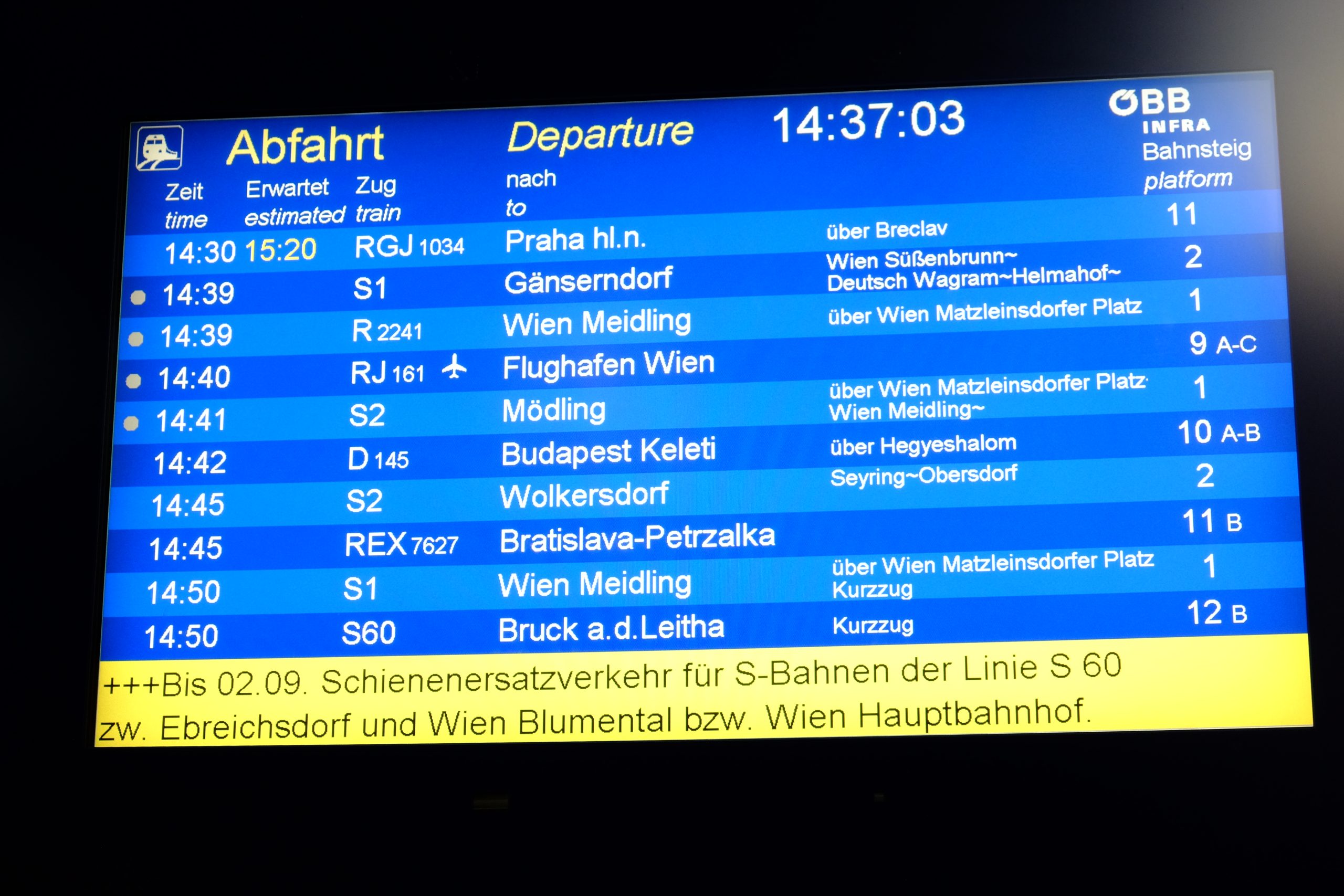5.4 Wann hast du Kurse?

Guten Tag!
Zum Aufwärmen machen wir unseren Tagesminiplausch und eine Wiederholung.
Wiederholung
In the previous lesson, you learned how to talk about your course load and to say when you have classes. Let’s review!
Take a moment to write down a few notes in German about your class load and schedule. Wie viele Kurse hast du? How many classes do you have? Wann hast du Kurse? When do you have classes? Write down those words and phrases that you remember from the previous lesson. Then check your work.
Lektionsüberblick
In this lesson, we will continue to expand on your ability to talk about your studies. This lesson will focus on the telling time in German and being able to talk about time commitments. In the end, you will be able to 1) tell time on the 24hr clock and 2) say at what time your classes are.
1) Telling time – the 24hr clock
You might already be familiar with military time, also known as the 24-hour clock. In Germany, the 24-hour format is used for written times, e.g. the train times at der Bahnhof (the train station) or any official happenings. Although Germans generally use the 12-hour clock in conversation, the phrases are more complex and will be covered in 2nd semester. This lesson will start with the 24-hour clock.
It requires a small bit of math to convert a time in the 24-hour format (military time) to the 12-hour format, but you’ve got this.
Here are the steps:
- First, if the military time you see is less than 12:00, it is a.m. If it is greater than 12:00, it is p.m.
- If the military time is greater than 12:00, subtract 12 from the hour to get the regular/12-hour format time.
Example: You are at der Bahnhof, and your train leaves at 13:00. Using the steps above, what time is that in the 12-hour format?
Answer: Because the time is greater than 12, you know you are dealing with p.m. time. So, subtract 12 from 13 (13-12), and your time is 1:00p.m (ein Uhr).
You better hurry! Your train is about to leave. 😉
Let’s practice.
Jetzt bist du dran!

Using what you know about converting military time to the 12-hour format, take a look at the schedule to the right. Answer the questions in your written journal, noting down the time listed and then rewrite it in the 12-hour format.
Österreich im Blickpunkt – An der schönen blauen Donau

Der Walzer “An der schönen blauen Donau” (häufig kurz “Donauwalzer“) wurde von Johann Strauss (Sohn) 1866 komponiert und am 15. Februar 1867 mit dem Wiener Männergesang-Verein uraufgeführt. Die erste Aufführung der Konzertfassung des als opus 314 veröffentlichten Walzers fand am 10. März 1867 im Volksgarten in Wien statt. Der Walzer wurde bald zu einer heimlichen Hymne Österreichs und wird regelmäßig zum Jahreswechsel gespielt. Heute ist er weltweit eines der populärsten Werke der klassischen Musik. 👂 Hier hören.
“The Blue Danube”, the common English title of “An der schönen blauen Donau” (often shortened to Donauwalzer = Danube Walz), is a waltz by the Austrian composer Johann Strauss II, composed in 1866. It was originally performed on 15 February 1867 at a concert of the Wiener Männergesang-Verein (Vienna Men’s Choral Association). The first performance of the concert version known as the Opus 314 was on March 10, 1867 in the Volksgarten in Vienna. The walz soon became Austria’s secret hymn and is typically played at the New Year. Today, it is one of the most popular pieces of music in the classical repertoire.
2) Say at what time your classes are
Oftentimes, classes do not start and end at the hour so you will need to be comfortable with the numbers in between, especially numbers like thirty (dreizig), fifty (fünfzig), or even forty-five (fünfundvierzig). Take a moment to review larger numbers like these in the video.
Next let’s practice saying when your classes are. Read and listen to some example sentences.
Let’s practice.
Jetzt bist du dran!
Zum Schluß

*As you conclude this lesson, don’t forget to check Canvas!*

Media Attributions
- Video Deutsche Zahlen Von 1 Bis 100 by Deutsch Lernen in Deutschland, licensed by CC-BY International License.

